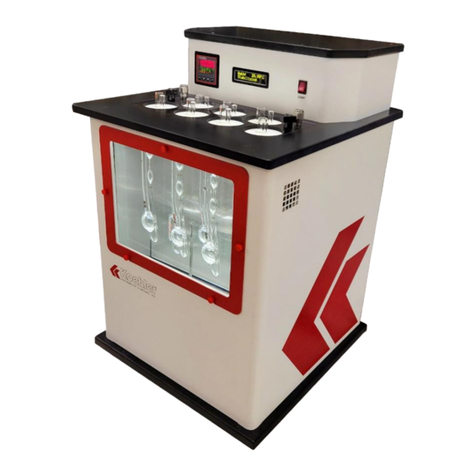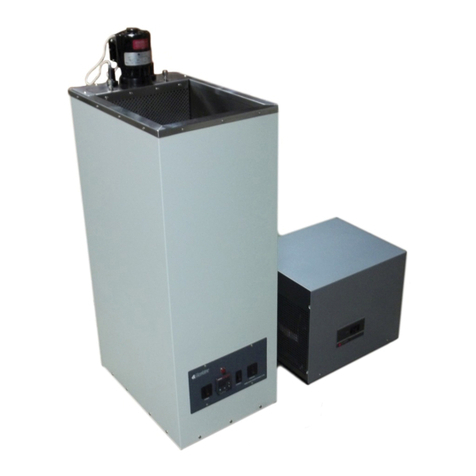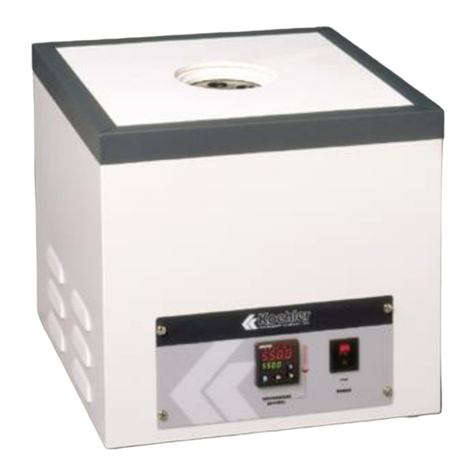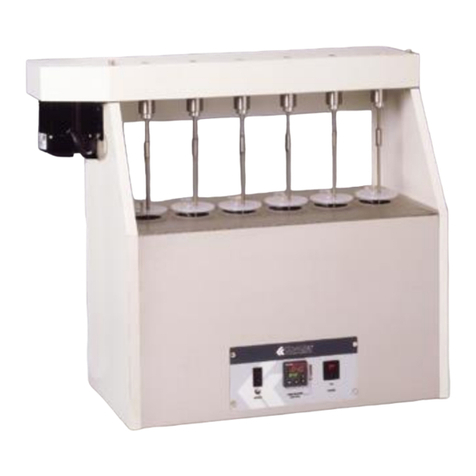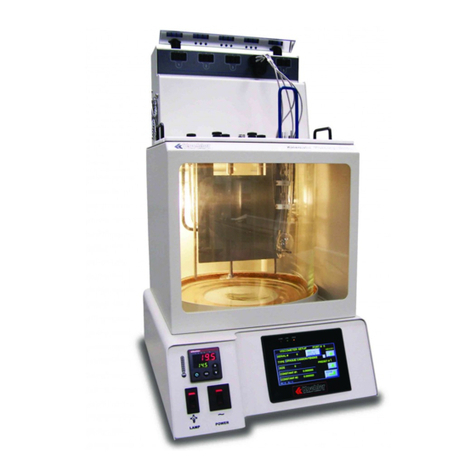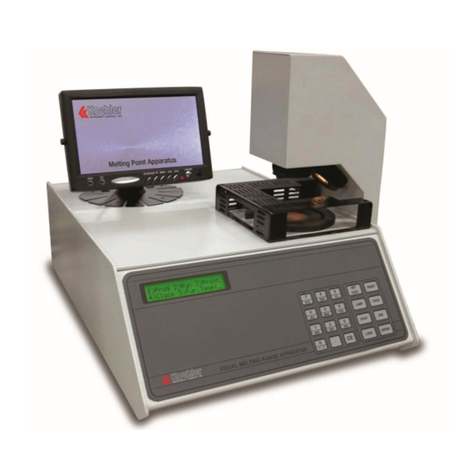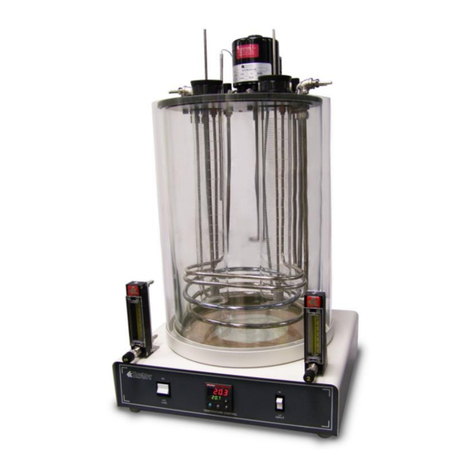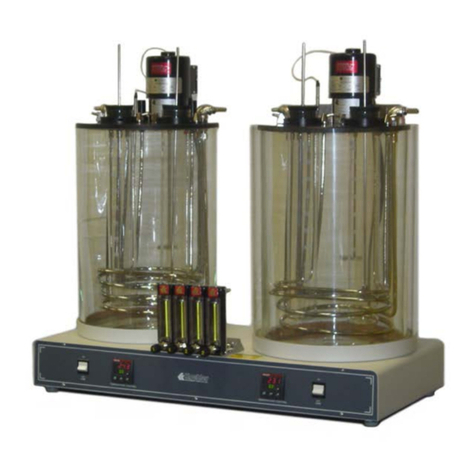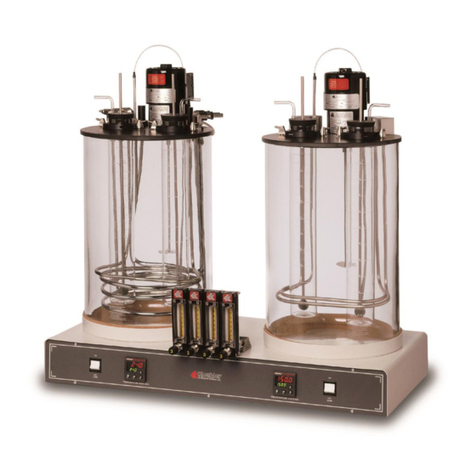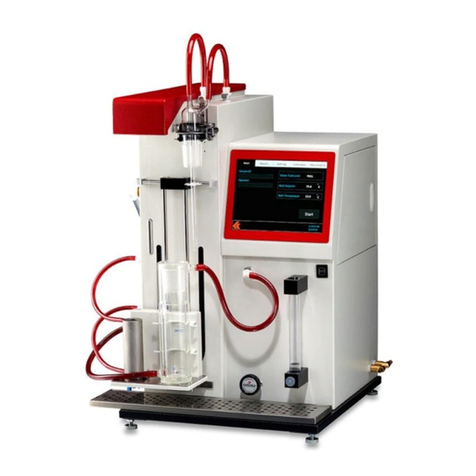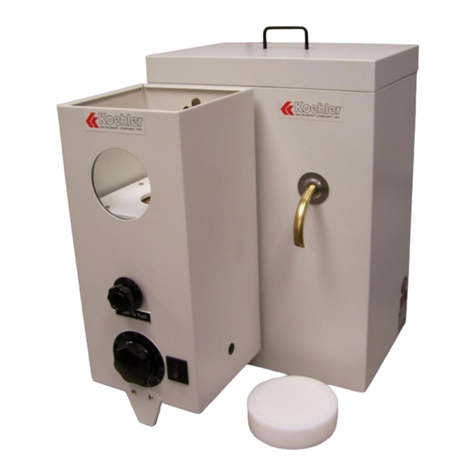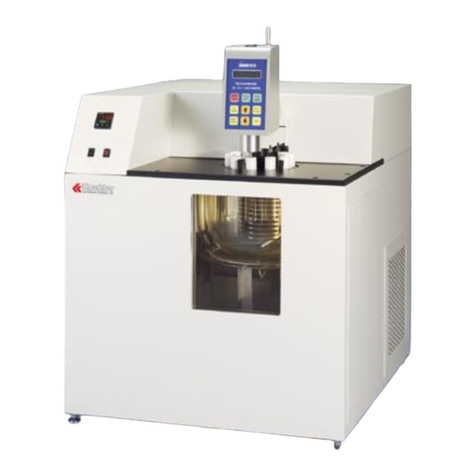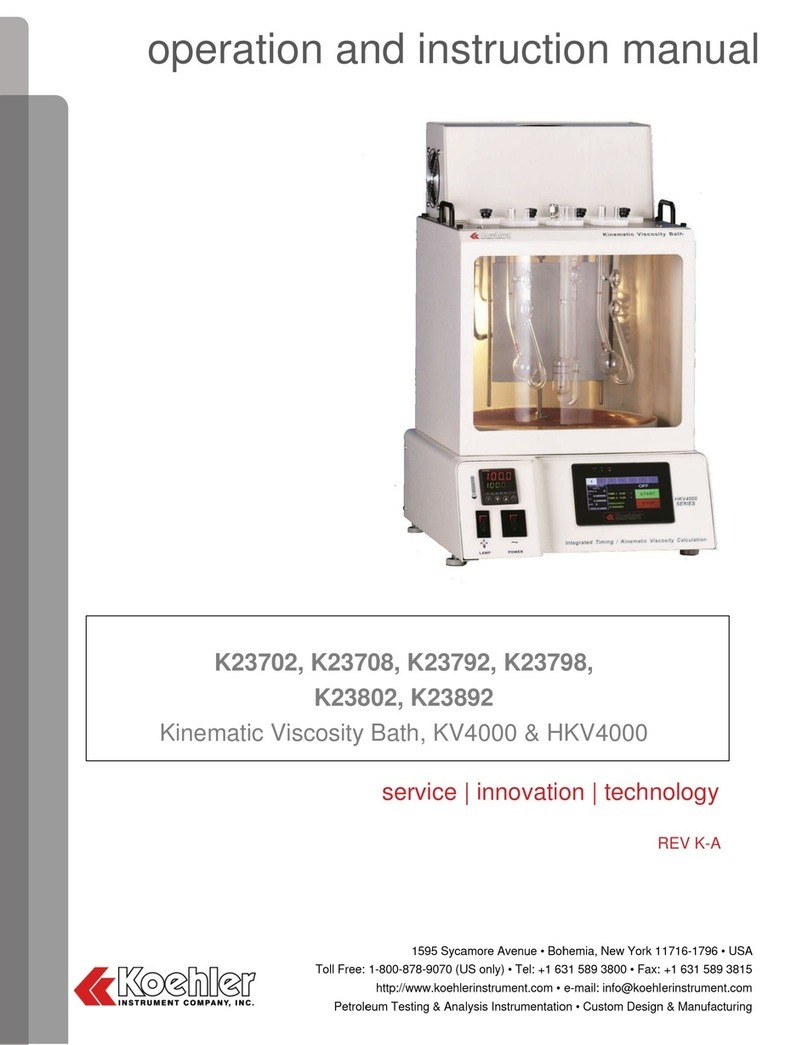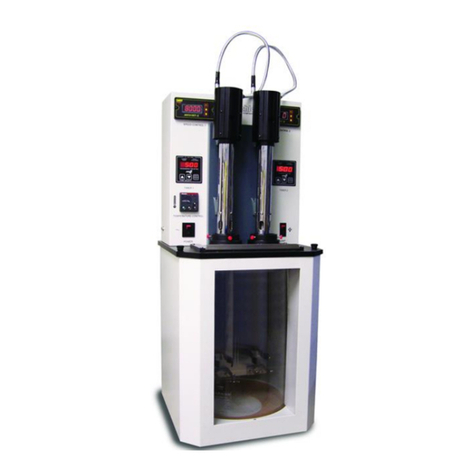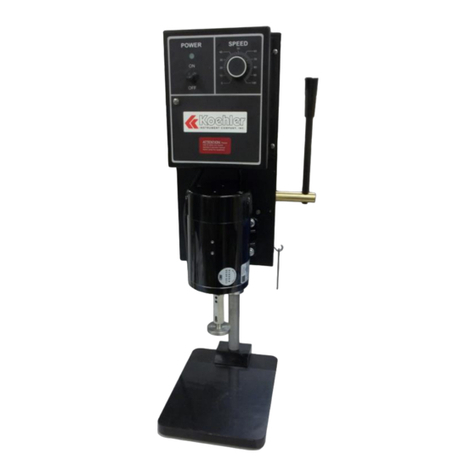
Low Temperature Torque Apparatus
Operation and Instruction Manual
K18854,55,64,65-Manual -9-
1 Introduction
The Koehler Low Temperature Torque
Apparatus determines the extent to which a
sample grease retards rotation of a test bearing
when subjected to low temperatures. A grease
sample is packed into an automotive wheel
bearing or a slow speed ball bearing and cold
soaked at the test temperature. The spindle
(automotive grease) or inner bearing ring (ball
bearing grease) is then rotated at 1 RPM while the
restraining force on the test rig is measured and
displayed digitally. Torque values calculated from
the force determinations measure the viscous
resistance of the grease. Models equipped with
the optional data acquisition system provide a test
record for reporting purposes.
This manual provides important information
regarding safety, technical reference, installation
requirements, operating condition specifications,
user facility resource requirements, and operating
instructions for the Low Temperature Torque
Apparatus. This manual should also be used in
conjunction with applicable published laboratory
procedures. Information on these procedures is
given in section 1.2.
1.1 Koehler’s Commitment to Our
Customers
Providing quality testing instrumentation and
technical support services for research and testing
laboratories has been our specialty for more than
50 years. At Koehler, the primary focus of our
business is providing you with the full support of
your laboratory testing needs. Our products are
backed by our staff of technically knowledgeable,
trained specialists who are experienced in both
petroleum products testing and instrument service
to better understand your requirements and
provide you with the best solutions. You can
depend on Koehler for a full range of accurate and
reliable instrumentation as well as support for your
laboratory testing programs. Please do not
hesitate to contact us at any time with your
inquiries about equipment, tests, or technical
support.
Toll Free: 1-800-878-9070 (US only)
Tel: +1 631 589 3800
Fax: +1 631 589 3815
http://www.koehlerinstrument.com
1.2 Recommended Resources and
Publications
1. American Society for Testing and Materials
(ASTM)
100 Barr Harbor Drive
West Conshohocken, Pennsylvania 19428-
2959, USA
Tel: +1 610 832 9500
Fax: +1 610 832 9555
http://www.astm.org
ASTM Publication:
ASTM D1478: Standard Test Method for
Low Temperature Torque of Ball Bearing
Grease
ASTM D4693: Standard Test Method for
Low Temperature Torque of Grease
Lubricated Wheel Bearings
ASTM D4950: Standard Classification and
Specification of Automotive Service
Greases
2. Federal Test Method (FTM)
FTM Publication:
FTM 791-334: Grease Torque Test
1.3 Instrument Specifications
K18854, K18855
K18864, K18865
220-240V 50Hz 20 A
220-240V 60Hz 20 A
Ambient to -54°C (-65°F)
(Models K18854 and
K18864 only)
Optional
Temperature
Range:
Ambient to -73°C (-100°F)
(Models K18855 and
K18865 only)
Temperature
Control Stability:
Air Cooled Mechanical
Cascade Hermetic System
Floor-mount, polished
stainless steel exterior,
rides on swivel casters

